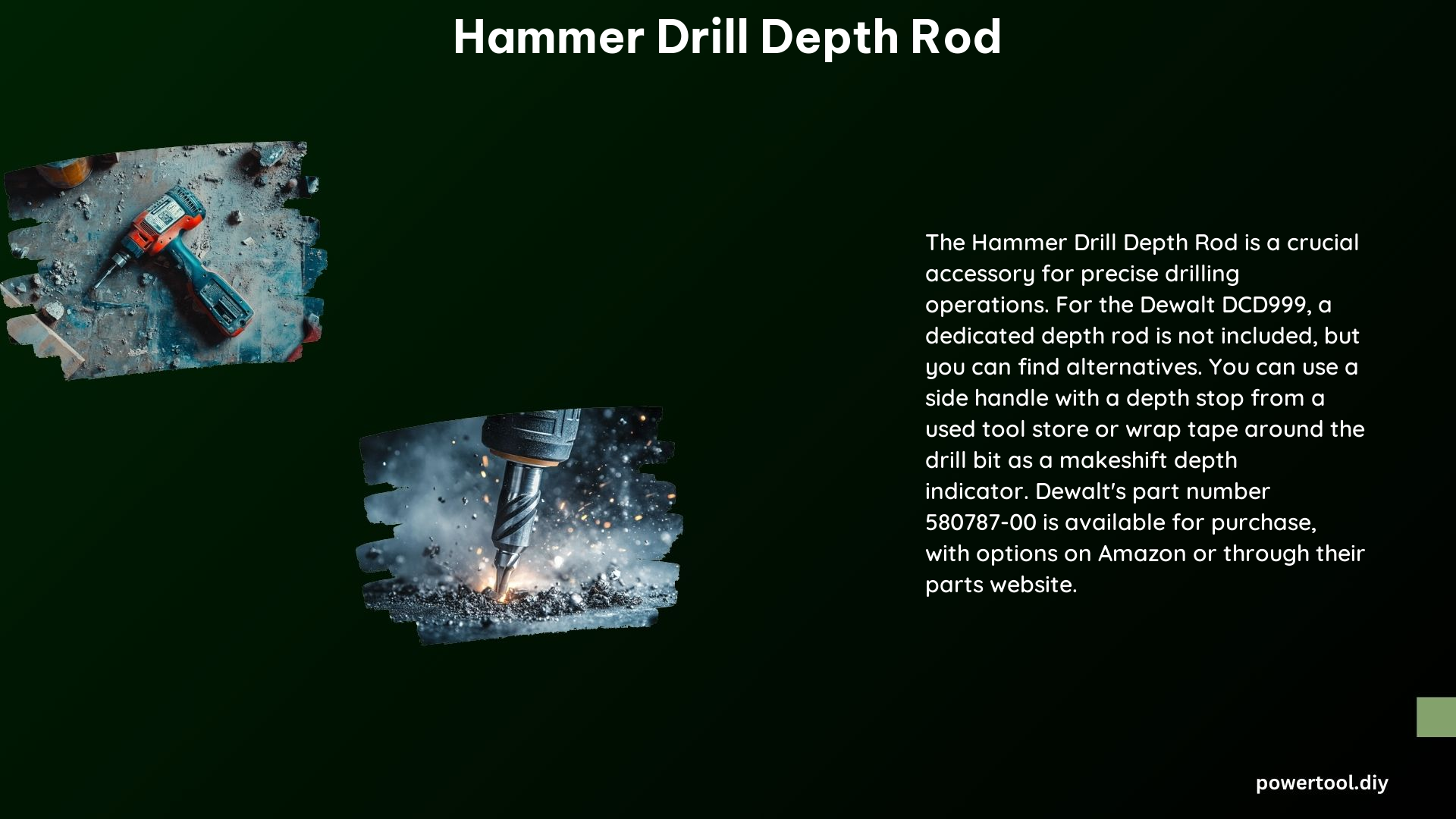The Hammer Drill Depth Rod is a crucial accessory for ensuring precise control over the drilling depth when using a hammer drill. This comprehensive guide will provide you with in-depth technical details, practical tips, and expert recommendations to help you master the use of the Hammer Drill Depth Rod.
Can a Hammer Drill be Used to Drive Ground Rods in Hard or Rocky Ground?
Yes, a hammer drill can be an effective tool for driving ground rods in hard or rocky ground. Hammer drills are designed to handle tough drilling tasks, thanks to their ability to generate high torque and impact force. However, the specific hammer drill model and the drill bit used will significantly impact the efficiency and effectiveness of the process.
When driving ground rods in hard or rocky ground, it’s essential to choose a hammer drill with the right specifications. Look for a model with a powerful motor, high torque output, and the ability to handle large drill bits. The Milwaukee 2612-20 M18 18V 5/8″ SDS Plus Rotary Hammer, for example, is a suitable choice for driving 1/2-inch ground rods in challenging terrain.
Recommended Hammer Drill Size for Driving 1/2 Inch Ground Rods

The recommended hammer drill size for driving 1/2-inch ground rods depends on the specific drill’s capabilities. As a general guideline, a hammer drill with a high torque output and a robust motor is required for driving large ground rods.
Here are some key specifications to consider when selecting a hammer drill for driving 1/2-inch ground rods:
| Specification | Recommended Range |
|---|---|
| Motor Power | 18V or higher |
| Torque Output | 4.0 ft-lbs or higher |
| Drill Bit Capacity | 5/8″ or larger SDS-Plus |
The Milwaukee 2612-20 M18 18V 5/8″ SDS Plus Rotary Hammer, with its 4.0 ft-lbs of torque and 5/8″ SDS-Plus drill bit capacity, is a suitable choice for driving 1/2-inch ground rods.
Comparison to Jackhammer in Terms of Speed and Efficiency
While a jackhammer can be a powerful tool for breaking through hard or rocky ground, a hammer drill is generally more efficient and faster for driving ground rods, especially in smaller to medium-sized applications.
Hammer drills are designed for precision and control, allowing for more accurate placement of the ground rods. They are also more maneuverable and easier to handle than a jackhammer, making them better suited for tasks that require a delicate touch.
However, in cases where the ground is exceptionally hard or rocky, a jackhammer might be more effective due to its higher impact force. Jackhammers are typically used for larger-scale demolition and excavation projects, while hammer drills are more versatile and can handle a wider range of drilling tasks.
Technical Specifications of Hammer Drill Depth Rod
The Hammer Drill Depth Rod is a specialized accessory that helps ensure precise control over the drilling depth. Here are the key technical specifications to consider:
Depth Gauge
A depth gauge is a critical component of a hammer drill depth rod. It ensures that the drill bit does not penetrate too far into the ground, preventing damage to underground utilities or structures. The Makita Depth Gauge, for example, is designed for drilling holes to a specific depth and is manufactured with high-quality materials for durability and long life.
Material
The material used for the depth rod should be durable and able to withstand the high forces generated by the hammer drill. High-quality materials like steel or heavy-duty aluminum are commonly used to ensure the depth rod can withstand the rigors of the job.
Adjustability
An adjustable depth rod allows for precise control over the drilling depth. This feature is particularly useful when working with different ground rod sizes or when the required depth varies across a project. The ability to easily adjust the depth rod ensures consistent and accurate drilling results.
DIY Tips
Using a Depth Stop
A depth stop is a useful feature on hammer drills that helps prevent over-drilling. To use a depth stop effectively, set it to the desired depth by pushing it forward until it is flush with the drill bit, then mark the position and withdraw the stop to that point. This ensures that the drill bit does not penetrate beyond the intended depth.
Alternative Methods
If a dedicated Hammer Drill Depth Rod is not available, you can use alternative methods to achieve similar results. One option is to use electrical tape or blue tape as a depth indicator, wrapping it around the drill bit at the desired depth. This provides a visual cue to help you avoid over-drilling.
References
- Milwaukee 2612-20 M18 18V 5/8″ SDS Plus Rotary Hammer: https://www.amazon.com/Milwaukee-2612-20-Rotary-Hammer-Depth/dp/B0CH13NXX2
- Toolstop Guide – Using a Depth Stop: https://www.youtube.com/watch?v=Mbvc7_RDo5c
- Makita Depth Gauge: https://www.makitatools.com/products/details/324219-0
- The Home Depot – Depth Gauge: https://www.homedepot.com/b/Tools-Power-Tools-Drills-Rotary-Hammers/Depth-Gauge/N-5yc1vZc8wvZ1z17tpb
- Reddit – Depth Rod for DCD999: https://www.reddit.com/r/Dewalt/comments/18sjigj/depth_rod_for_dcd999/
